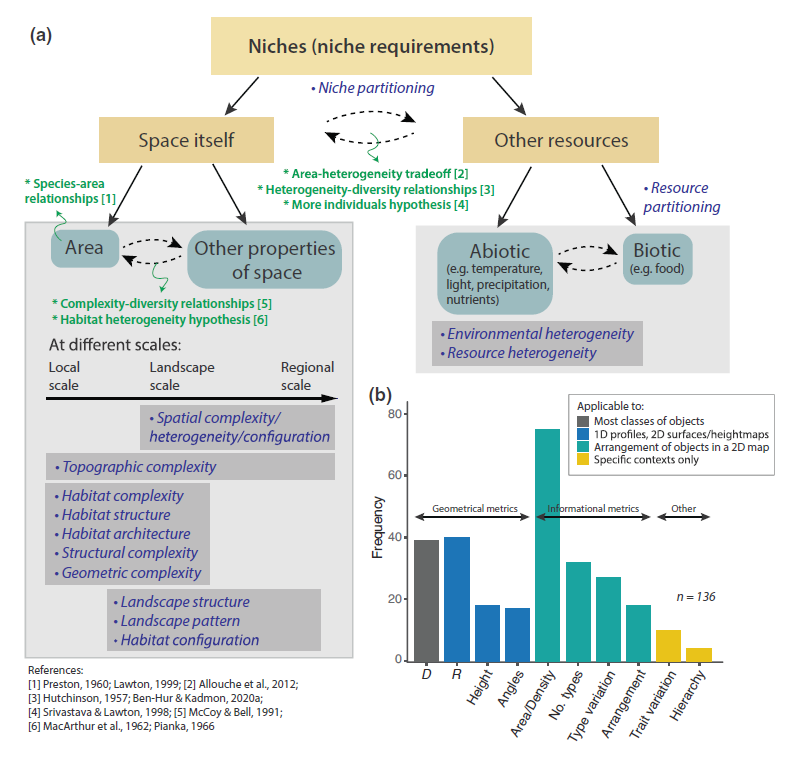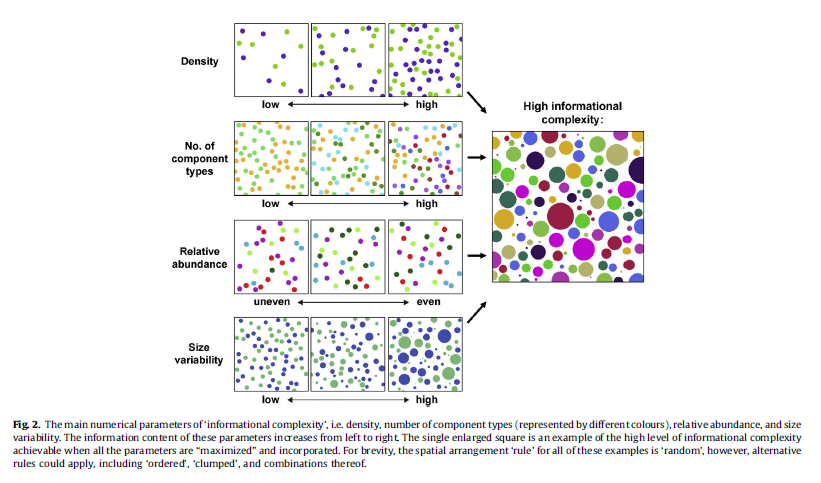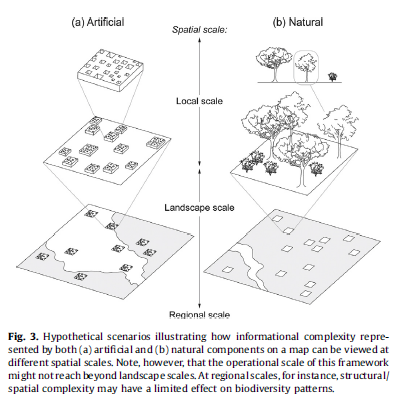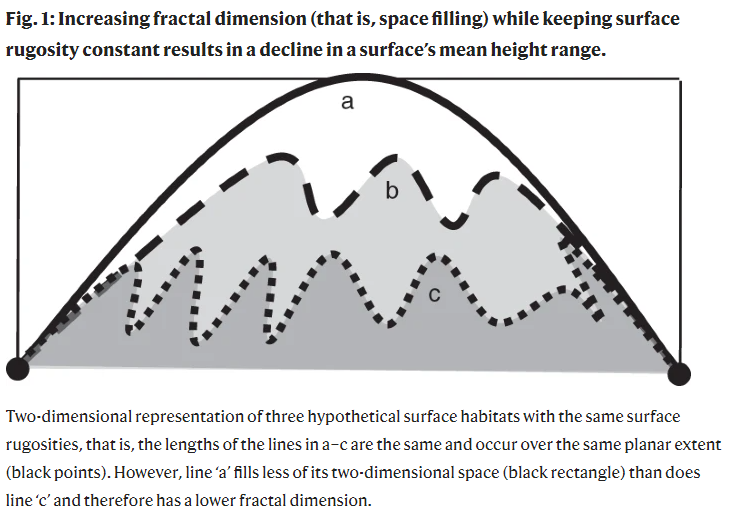Habitat Structure
This note refers to the nature, measurement and replication of habitat structures such as rocks, trees, hollows, corals, etc. It is about measuring and understanding the role of structural complexity and diversity, for example in niche construction and habitat provision.
Cf.
Relevant synonyms and concepts include:
- geomorphology
- biomorphology
- geo-biomorphology
- pattern formation
- self-organisation
- fractal geometry
- morphometrics
- morphogeometry
- ecohydrology, cf. Hydrology
- ecological heterogeneity
Concepts
Gámez, Siria, and Nyeema C. Harris. ‘Conceptualizing the 3D Niche and Vertical Space Use’. Trends in Ecology & Evolution, 2022. https://doi.org/10/gqkx4t.
Schuh, Leila A., Maria J. Santos, Michael E. Schaepman, and Reinhard Furrer. ‘An Empirical Bayesian Approach to Quantify Multi-Scale Spatial Structural Diversity in Remote Sensing Data’. Remote Sensing 15, no. 1 (2023): 14. https://doi.org/10/grkh9r.

Loke, Lynette H. L., and Ryan A. Chisholm. ‘Measuring Habitat Complexity and Spatial Heterogeneity in Ecology’. Ecology Letters, 2022. https://doi.org/10/gqp4p2.


Loke, Lynette H. L., Richard J. Ladle, Tjeerd J. Bouma, and Peter A. Todd. ‘Creating Complex Habitats for Restoration and Reconciliation’. Ecological Engineering 77 (2015): 307–13. https://doi.org/10/f669sz.
After Loke, the complexity (diversity, heterogeneity) of a habitat depends on the scale at which it is perceived and used by a living being. Consider bacteria, insects, birds and others.
Geometric Basis
Torres-Pulliza, Damaris, Maria A. Dornelas, Oscar Pizarro, Michael Bewley, Shane A. Blowes, Nader Boutros, Viviana Brambilla, et al. “A Geometric Basis for Surface Habitat Complexity and Biodiversity.” Nature Ecology & Evolution 4, no. 11 (2020): 1495–1501. https://doi.org/10/ghmz6c.

Trees
Lines, Emily Rebecca, Fabian Jörg Fischer, Harry Jon Foord Owen, and Tommaso Jucker. ‘The Shape of Trees: Reimagining Forest Ecology in Three Dimensions with Remote Sensing’. Journal of Ecology 110, no. 8 (2022): 1730–45. https://doi.org/10/grkjbp.
Small Habitat Features
Hard substrates:
- to attach to
- cracks to hide from predators or shelter in unfavourable weather
Benign microclimates:
- cracks in rocks
- bark cracks and hollows of large, old trees
Hunter, Malcolm L., Vicenç Acuña, Dana Marie Bauer, Kathleen P. Bell, Aram J. K. Calhoun, María R. Felipe-Lucia, James A. Fitzsimons, et al. ‘Conserving Small Natural Features with Large Ecological Roles: A Synthetic Overview’. Biological Conservation 211 (2017): 88–95. https://doi.org/10/gbn3c2.
Subnotes
Backlinks